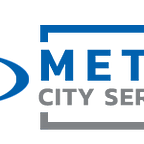What are the ways of repairing faults on electrical appliances?
If you have ever encountered issues with your electrical appliances, you know how frustrating and inconvenient it can be. From malfunctioning refrigerators to faulty washing machines, electrical faults can disrupt our daily routines. However, with the right knowledge and tools, many electrical appliance faults can be repaired at home. In this guide, we’ll explore the steps involved in repairing common electrical appliance faults and provide tips for troubleshooting and safety.
Understanding Common Electrical Appliance Faults
Identifying the Issue
The first step in repairing electrical appliance faults is identifying the problem. Whether it’s a refrigerator not cooling or a microwave not heating, observe the appliance’s behavior and note any unusual sounds or smells. This information will help you pinpoint the underlying issue and determine the appropriate course of action.
Safety Precautions
Before attempting any repairs, it’s essential to prioritize safety. Always unplug the appliance from the power source before starting any work to prevent electric shock or injury. Additionally, wear appropriate protective gear such as gloves and safety goggles to minimize the risk of accidents.
Tools Required for Repair
To effectively repair electrical appliance faults, you’ll need a few essential tools:
- Multimeter: For testing electrical components and circuits.
- Screwdriver Set: For disassembling and reassembling the appliance.
- Pliers: For gripping and manipulating small components.
- Insulation Tape: For securing wires and preventing electrical shorts.
Steps to Repairing Electrical Appliance Faults
Troubleshooting the Problem
Start by diagnosing the issue and determining the root cause of the fault. Check for common issues such as loose connections, damaged cords, or faulty components. Refer to the appliance’s manual or online resources for troubleshooting tips and guidance.
Disassembly Process
Once you’ve identified the problem, carefully disassemble the appliance to access the internal components. Use the appropriate tools and techniques to remove screws, panels, and covers without causing damage to the appliance.
Component Inspection and Replacement
Inspect the internal components of the appliance for signs of damage or wear. Focus on suspected faulty parts such as switches, motors, or heating elements. If any components are found to be faulty, replace them with new ones of the same type and specifications.
Reassembly and Testing
After replacing faulty components, reassemble the appliance in the reverse order of disassembly. Take care to ensure that all components are properly secured and aligned. Once reassembly is complete, plug in the appliance and test its functionality to verify that the fault has been resolved.
Common Mistakes to Avoid
When repairing electrical appliances, it’s important to avoid the following common mistakes:
- Ignoring Safety Precautions: Failure to prioritize safety can lead to accidents and injuries.
- Skipping Troubleshooting: Proper diagnosis is essential for identifying the root cause of the fault.
- Using Incorrect Parts: Using incompatible or substandard parts can worsen the problem and cause further damage to the appliance.
When to Seek Professional Help
While many electrical appliance faults can be repaired at home, there are instances where it’s best to seek professional help. If you’re unsure about the nature or severity of the fault, or if the appliance is still under warranty, it’s advisable to consult a qualified technician for assistance.
Conclusion
Repairing faults on electrical appliances can be a challenging but rewarding endeavor. By following the steps outlined in this guide and prioritizing safety, you can effectively diagnose and repair common electrical appliance faults, saving time and money in the process.
